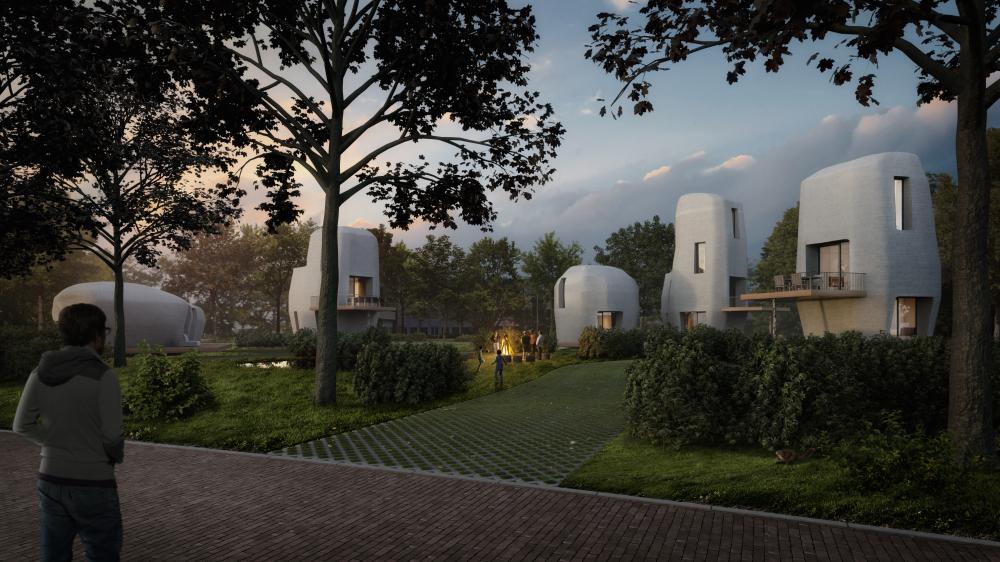The World's First Habitable 3D printed house printed
Originally published at inkl.
The first habitable homes made by a 3D printer appeared in the Dutch city of Eindhoven.
Of the first five new heouses to be put on the rental market next year, the smallest, with two bedrooms, has already attracted applications from 20 interested families just a week after images were made available.
The development is said by the Dutch construction company Van Wijnen to offer a solution to a shortage of skilled bricklayers in the Netherlands.
The method will also cut costs and environmental damage by reducing the amount of cement that is used, said Rudy van Gurp, a manager at the firm, which is working in collaboration on the project with the Eindhoven University of Technology.
The 3D printer being used is essentially a huge robotic arm with a nozzle that squirts out a specially formulated cement, said to have the texture of whipped cream.
The cement is “printed” according to an architect’s design, adding layer upon layer to create a wall, and increase its strength. “We have no need for the moulds used to create houses made with cement today, and so we will never use more cement than is necessary,” Van Gurp said.

Designers have described the style of the first set of homes being built by Van Wijnen as ‘erratic blocks in the green landscape’.
An artist’s impression of the 3D printed houses. Designers have described the style of the first set of homes being built by Van Wijnen as ‘erratic blocks in the green landscape’.
Only the exterior and inner walls of the first of the new homes will be made using the printer, which will be located off-site.
By the time the fifth of the homes is built – comprising three floors and three bedrooms – it is hoped that the drainage pipes and other necessary installations will also be made using the printer, which will be located on the site of the new houses, which will again reduce costs.
The use of 3D printing additionally opens the possibility of placing wireless sensors directly into the properties’ walls to allow a home to be fully “smart”, incorporating all the lighting, heating and security controls required.
They are said to illustrate the fact that 3D printing allows the construction of buildings of “almost any shape… whereas traditional concrete is very rigid in shape”.
